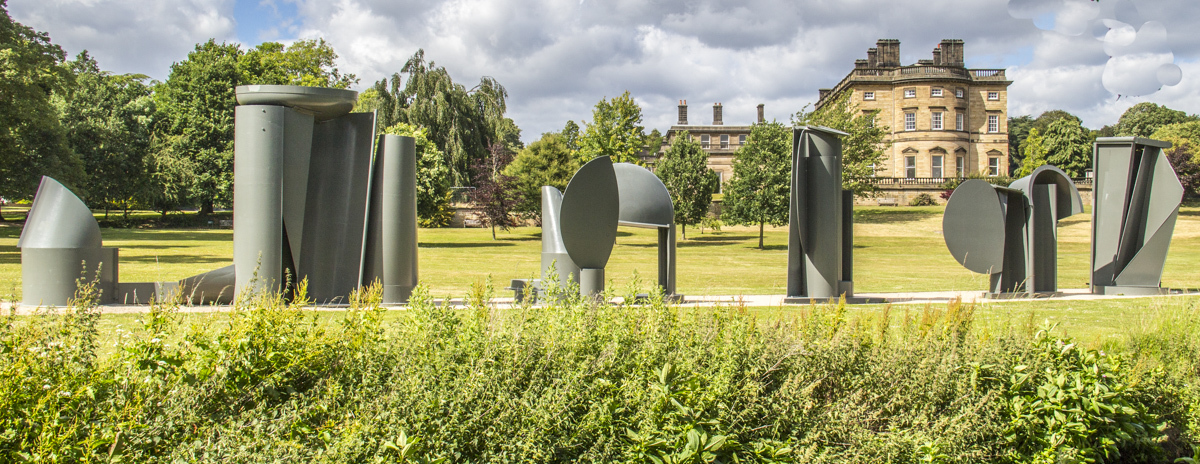
England is blessed with a variety of attractions from magnificent stately homes to landscaped parks inhabited by animals real and imaginary. Yorkshire Sculpture Park, Exbury Gardens, Marwell Zoo, Blenheim Palace and Kew Gardens are my selection of the best places for a day out in spring.
Yorkshire Sculpture Park
Yorkshire Sculpture Park is a showcase for modern and contemporary art. It features some of the world’s finest artists. Their works are displayed around the huge, historic estate that surrounds the beautiful Bretton Hall built in thePalladian style of architecture. A succession of owners of this stately home developed the beautiful parks and gardens that are now open to the public. These include a lake on which the family would sail. This was created by damming the River Dearne that runs through the estate. Since the Park opened in 1997 some of its quirky follies have been rescued from tangled undergrowth. These include the Stepping Stones, the Boathouse, the Shell Grotto and an early bath house. Site specific installations have been added as well including brass trees and roots and sheep pens.
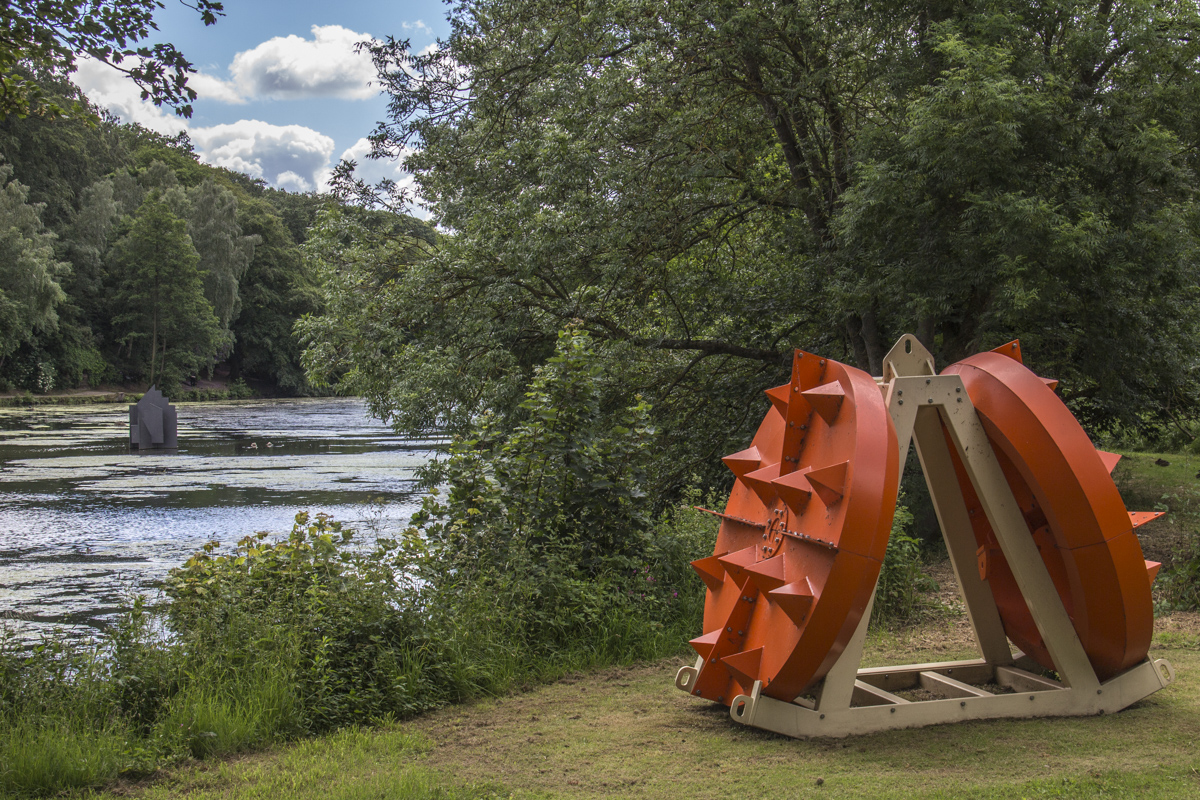
By the Lake at the Yorkshire Sculpture Park
In addition to the open-air displays there are several art galleries around the estate that house temporary exhibitions. These include the lovely Georgian sandstone Chapel a short walk from the main entrance. This eighteenth century private chapel was built in the classical style with Tuscan pilasters and a cylindrical bell tower. Scattered around the estate are some wonderful works of art, some permanent, some temporary. I came across several by Henry Moore. And I was fascinated by the small outdoor exhibition of works by Barbara Hepworth. It is a fabulous day out. Visitors can follow the walking trials or just enjoy the exhibits clustered around the modern Visitor Centre. For me, a picnic lunch by the river was the icing on the cake. Want to know more? Read my account of the day I spent in the Yorkshire Sculpture Park.
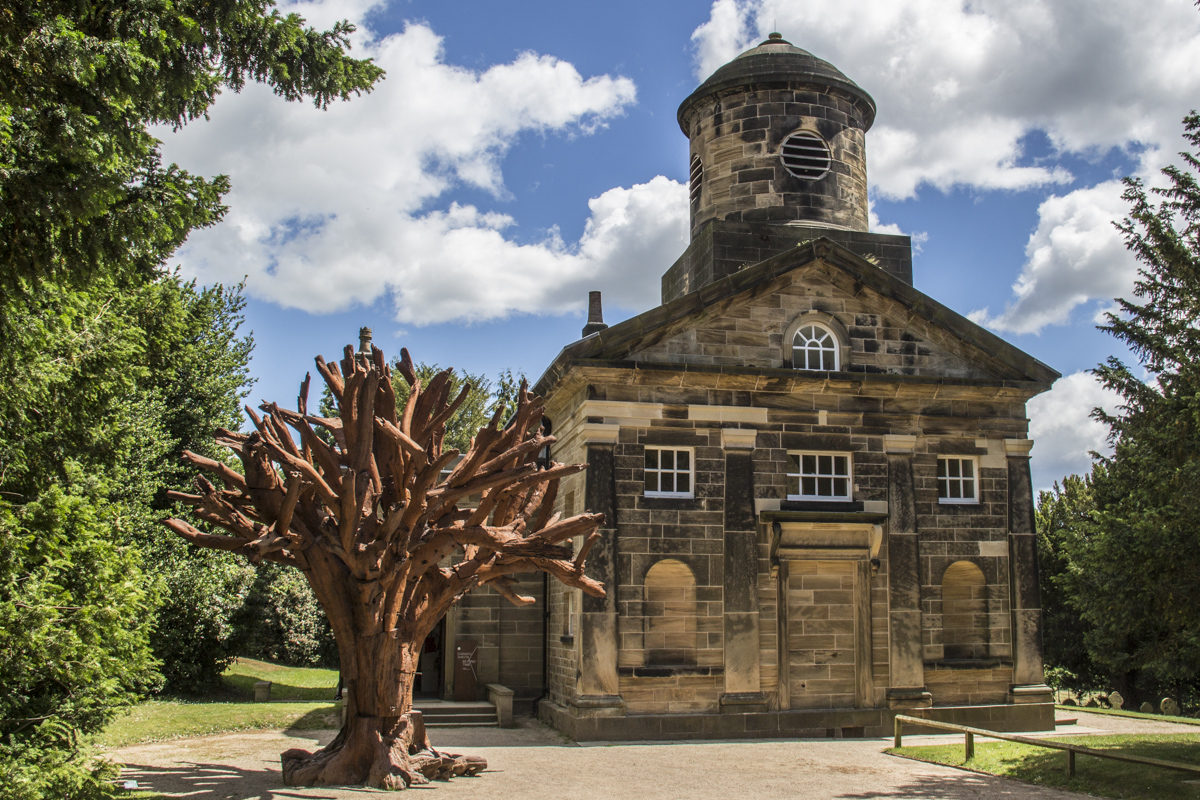
The Chapel in the Yorkshire Sculpture Park
Exbury Gardens
Exbury Gardens in the New Forest were inspired by Lionel Nathan de Rothschild a member of the famous Rothschild banking family in 1882. He bought the Exbury Estate beside the Solent. As the estate has a unique micro-climate it was ideal for the propagation of magnolias, camellias, rhododendrons and azaleas. The gardens were created during the period when plant hunters and explorers were collecting seeds from remote places around the world and many of these exotic species found their way to Exbury. In springtime the formal gardens are ablaze with their brilliant colours.
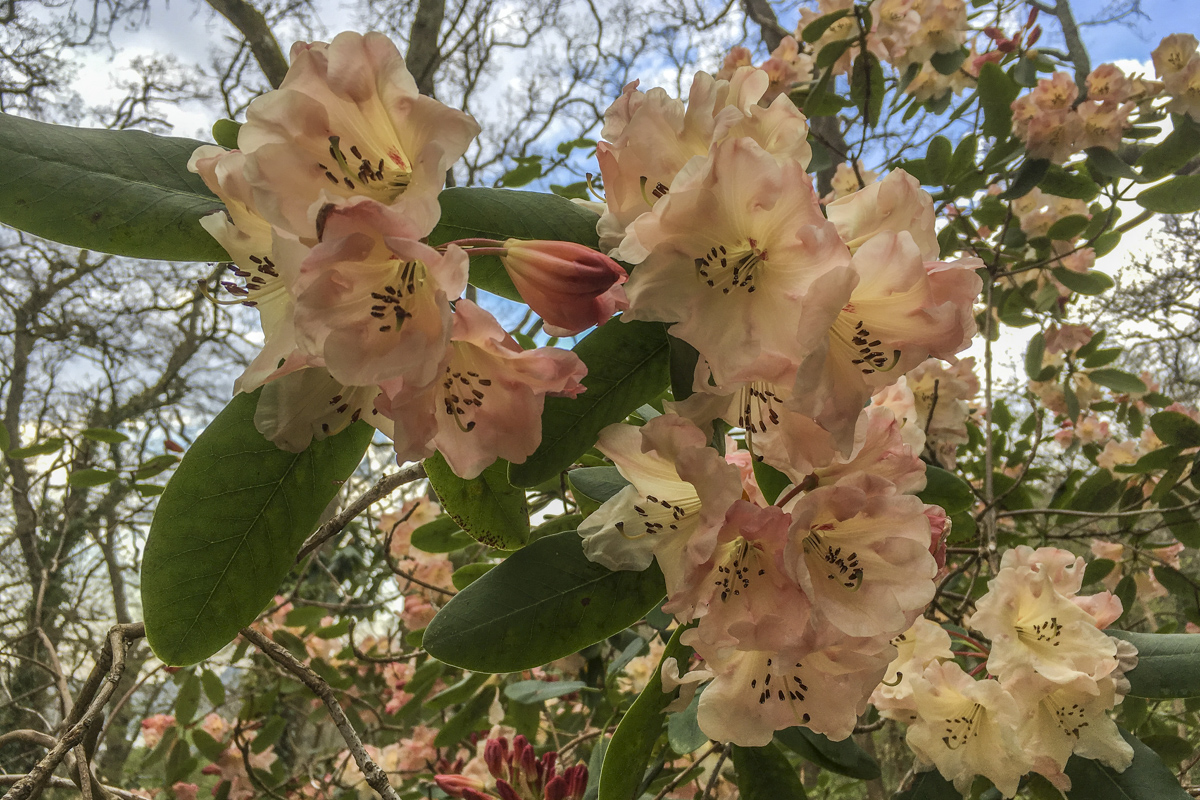
Spring Blossoms in Exbury Gardens
Beyond the formal gardens the River Path winds its way down to the banks of the privately owned Beaulieu River. This area is a very natural contrast to the formality of the gardens around the house. Other attractions include a bog garden and a huge rock garden. The latter, spread over an area of two acres is probably the largest of its kind in Europe. A miniature train trundles around the grounds at regular intervals. And Mr Eddy’s welcomes visitors for rest and refreshment. These gardens are changing all the time as the seasons go by but my favourite time to visit Exbury is springtime.
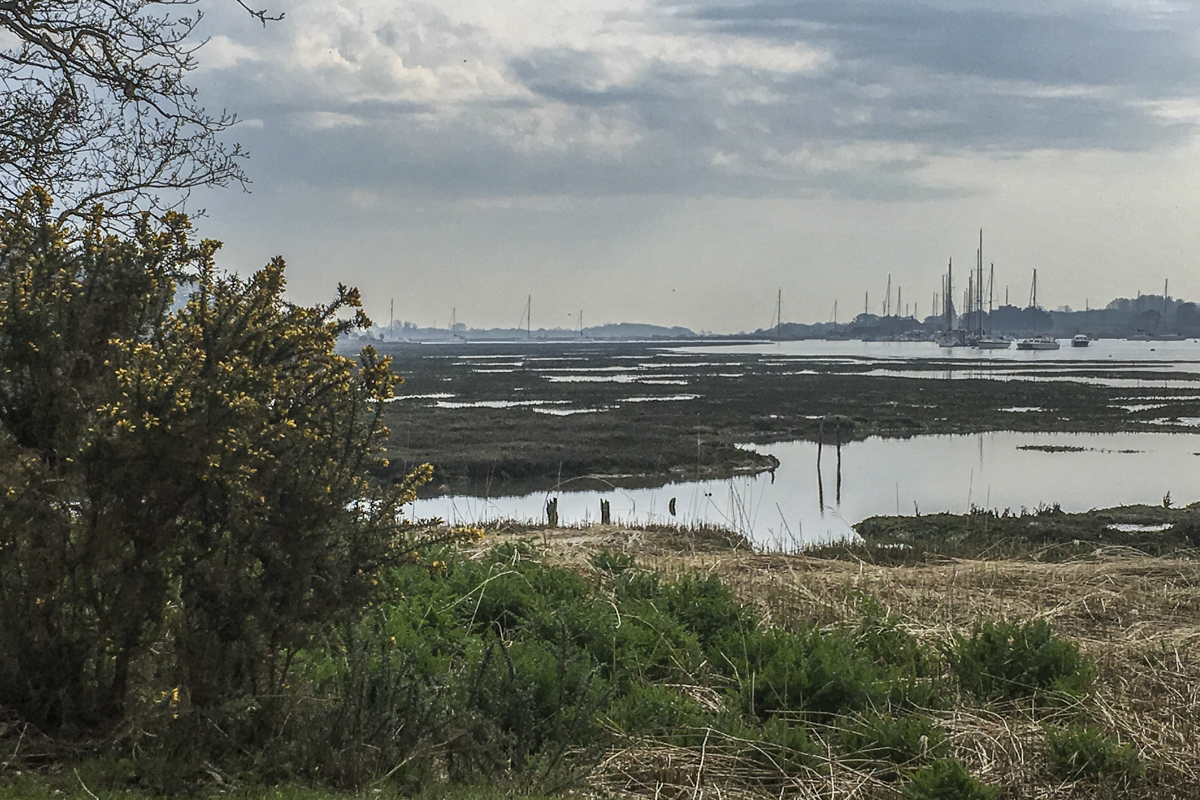
The Bank of the Beaulieu River in Exbury Gardens
Marwell Zoo
Marwell Zoo is so much more than a zoo. It embraces a conservation programme as well as offering educational presentations about the animals there. When Marwell was founded by John Knowles his main objective was the conservation of endangered species and in particular ungulates. The scimitar-horned oryx was one of the first species kept at Marwell and more than two hundred calves have been born and reared there. Marwell was one of the first European zoos to focus on animal conservation and is still an important breeding centre for several endangered species. All the animals here are housed in large enclosures with places to hide away from the public should they choose to do so. The zoo covers a huge area and visitors who do not want to explore on foot can take advantage of the road train. There is also a rail train that runs inside some of the enclosures. During the first hour I was there I saw a flock of flamingos in flight, watched the penguins being fed and listened to a fascinating presentation about giraffes.
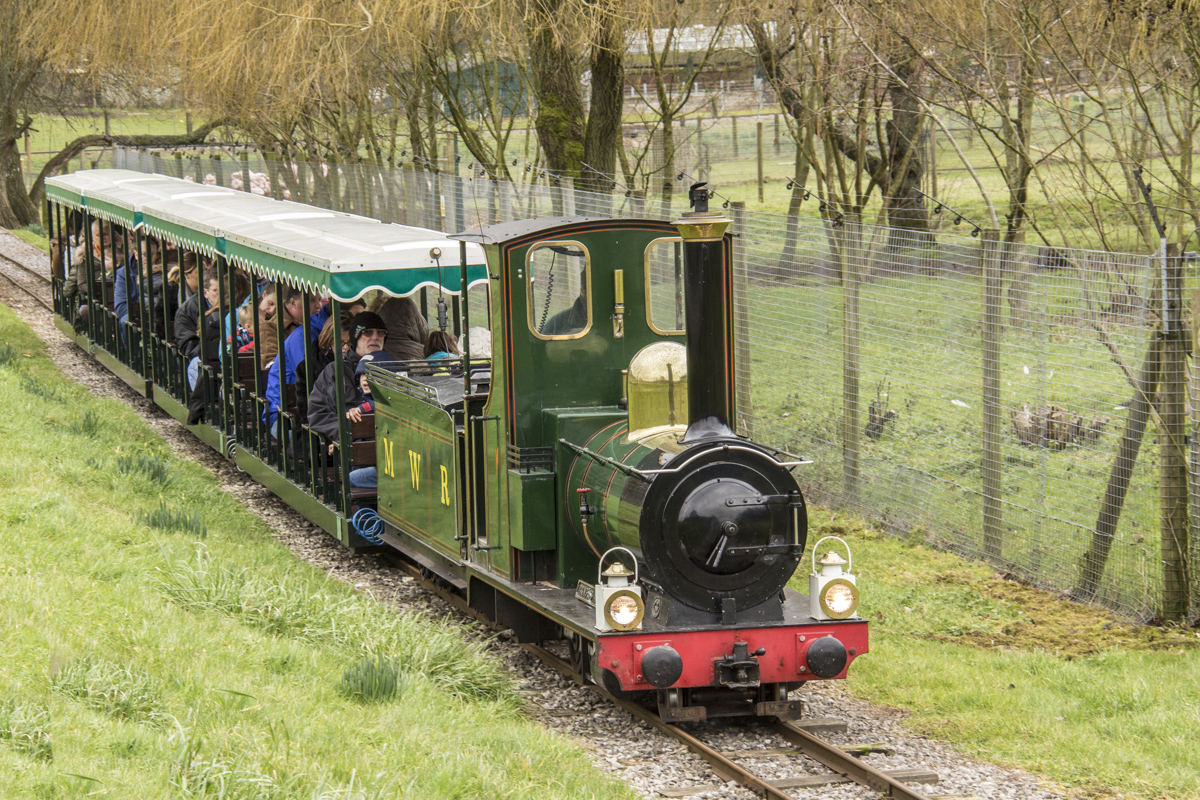
Exploring Marwell Zoo by train
Well-placed maps, information boards and signposts made it easy to find my way around the park. I spent some time trying to distinguish the differences between the Hartmann’s mountain zebra and Grevy’s zebra. I spent a long time admiring the big cats including lions, tigers and the amur leopard. I was captivated by the oriental or Asian small-clawed otters frolicking on the river bank. And amused by the antics of the meerkats. But my favourite place was the World of Lemur. In this well-laid out complex of linked cages and enclosures visitors can sit and watch the lemurs gambolling in their separate gardens from the viewing areas. I had no idea these charming creatures were on the endangered list. My day at Marwell was both a delight and an education. Have you ever wondered how zoos keep their animals mentally alert – this article will enlighten and educate regarding your own pets.

A Lemur Wrapped in his Tail at Marwell Zoo
Blenheim Palace
Blenheim Palace in Woodstock, Oxfordshire is one of the most famous stately homes in England and certainly lives up to its reputation as a must-see attraction. It was given to the First Duke of Marlborough following his success at the Battle of Blenheim in 1704. Over three centuries later it is still the home of the Marlborough family. Part of the palace and the extensive grounds are open to the public. This elegant landscape, created by Capability Brown was once a marsh on the banks of the Glyme. Today visitors can explore the formal gardens close to the palace or take the miniature train to Pleasure Gardens. The formal gardens include the water terraces behind the house and the Winston Churchill Memorial Garden. Churchill was born at Blenheim Palace but was never destined to succeed to the title of Duke of Marlborough. The grounds also include a lake and the Cascades on the river. The Butterfly House in the Pleasure Gardens is a riot of exotic blooms and brilliant butterflies.
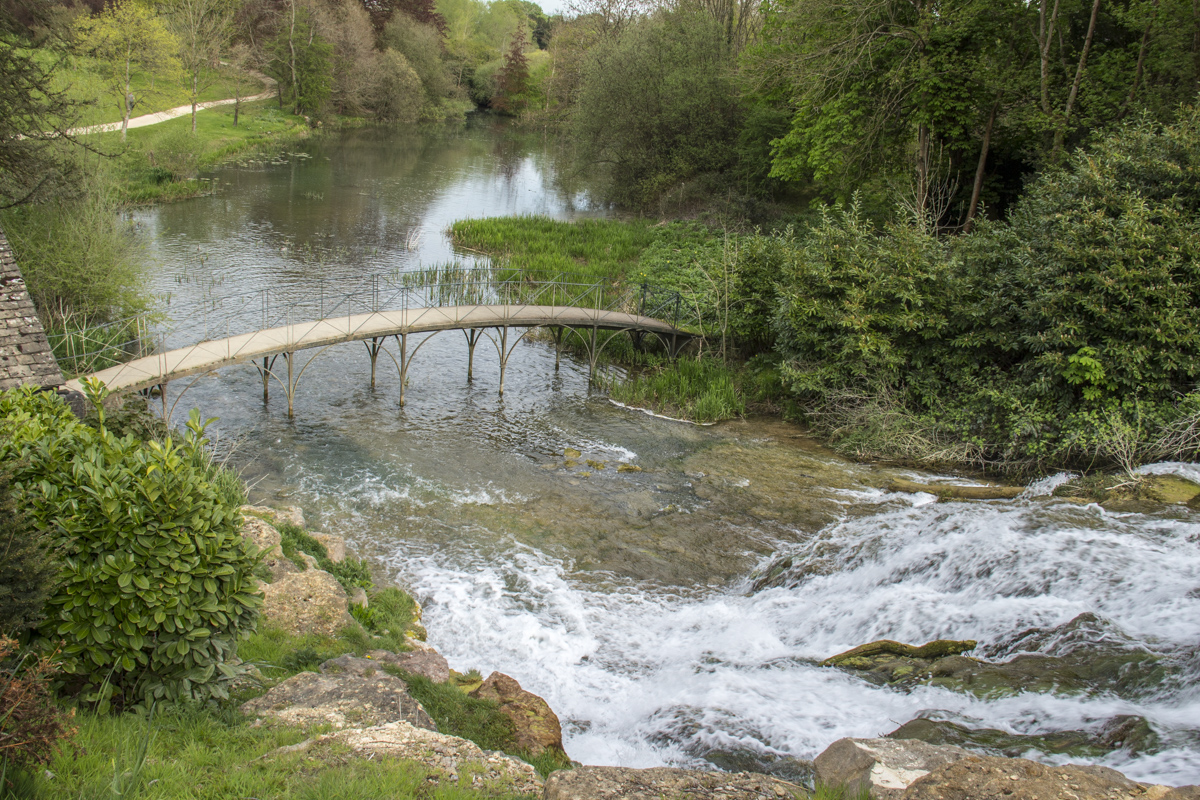
The Cascades at Blenheim Palace
A variety of guided tours around the palace are included in the entrance fee. Discretely placed information boards in the rooms help visitors to find their own way around but a guided brings the place to life. A real treat for visitors is a traditional English afternoon tea served in the Orangery. This beautiful setting is ideal for a delicious tea with a wide range of teas and tisanes to choose from or maybe a flute of champagne? I thoroughly enjoyed my day at Blenheim Palace and explored from dawn to dusk.
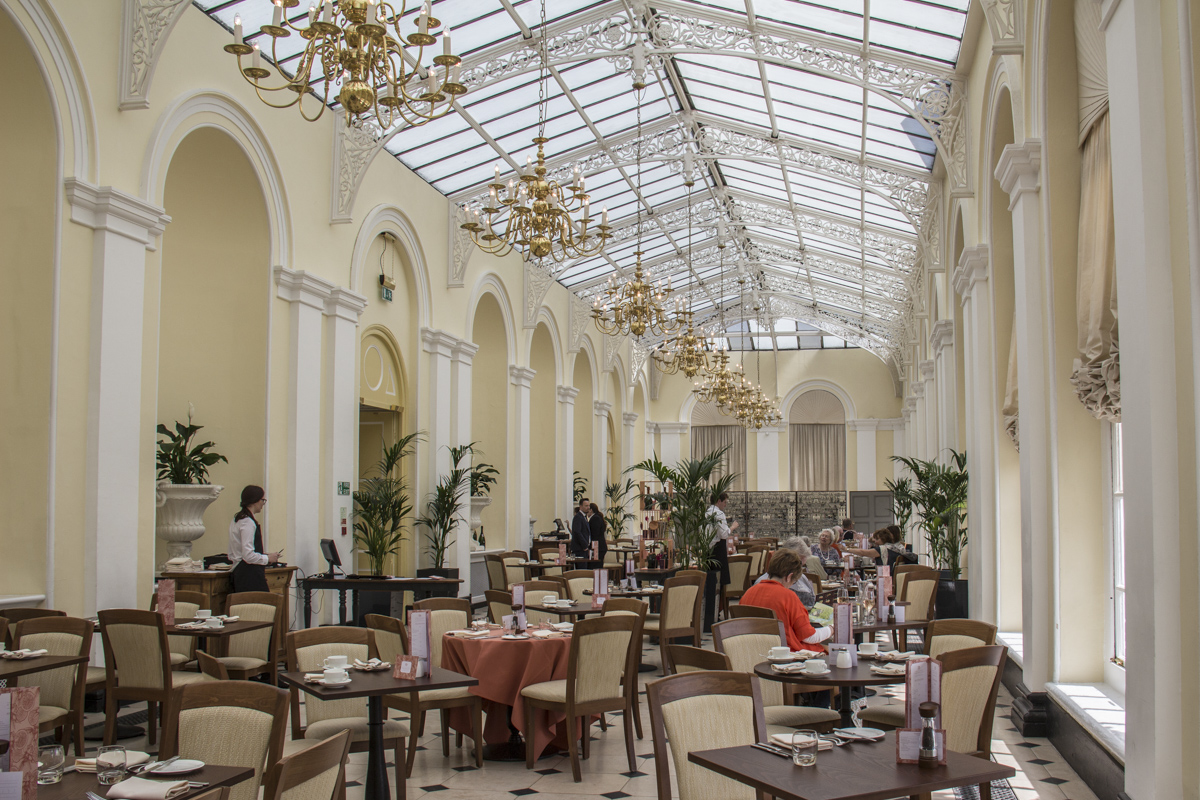
The Orangery at Blenheim Palace
Kew Gardens
No visit to London would be complete without a day spent in Kew Gardens once used as a country home by the British Royal Family. The gardens can be divided into three distinct areas, formal gardens, parkland and Kew Palace. Entering through the Victoria Gate the visitor will immediately be drawn into the gardens by a beautiful pond guarded by two Chinese guard lions. Beyond the water is the Palm House one of forty-four Grade 1 listed buildings in the Gardens. It became the model for greenhouses of that era worldwide and is now the most important surviving structure of its kind. So immense are the gardens that a good start to a visit would be a circuit on board the Kew Explorer, a hop-on and hop-off service. It is also a good way of learning some of the history of the gardens. Kew Palace was acquired by British Royal Family in 1729. Subsequently they developed the surrounding gardens creating a national treasure. Designated a UNESCO world heritage site in 2003 its historic landscapes reflect the changing periods of garden design through the eighteenth, nineteenth and twentieth centuries. The most famous of the follies, for which the gardens are particularly renowned is the fifty-metre high Chinese-style pagoda.
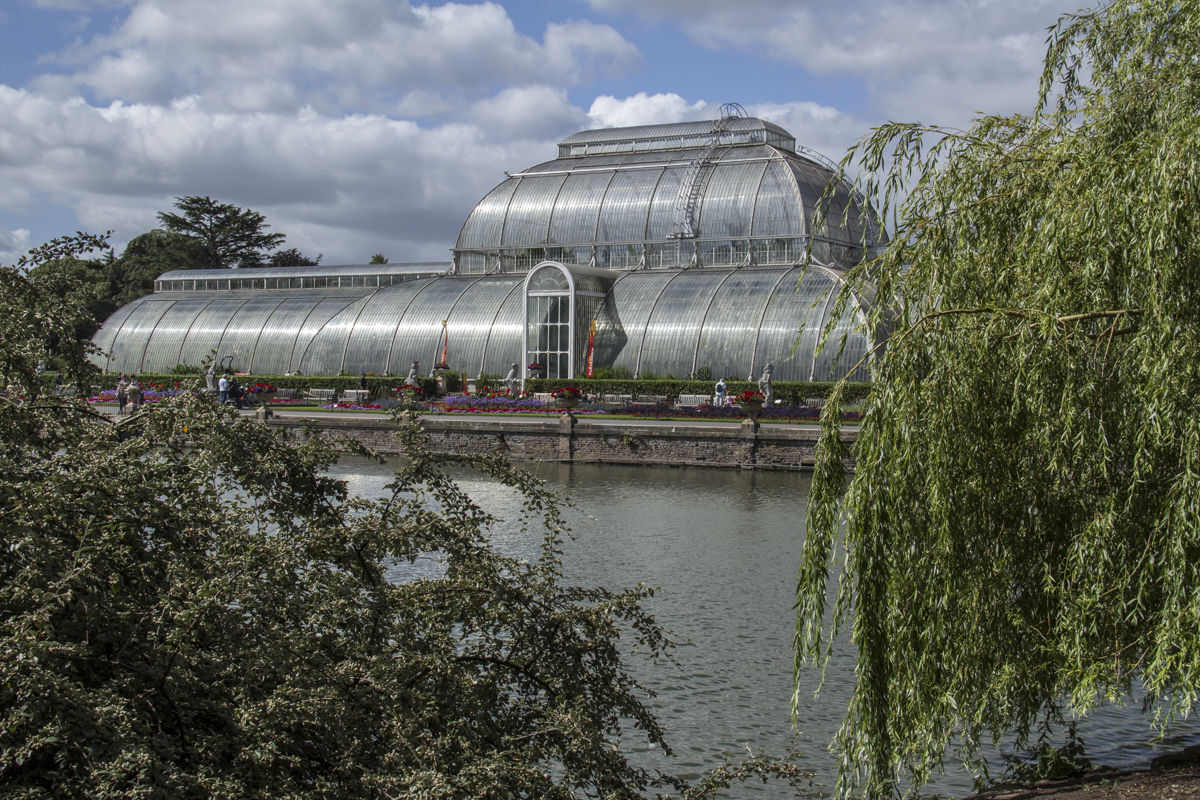
Palm Court and the Pond at Kew Gardens
Modern features include the Alpine House and the thrilling tree top walkway in the parkland area. Other features include the Japanese Landscape which was designed to complement the Japanese Gateway or Chokushi-Mon (Gateway of the Imperial Messenger). This gate was originally created for the Japan-British exhibition in 1910 after which it was reconstructed in the Gardens. There is also an interesting bridge, the first to cross the lake. It is known as the Sackler Crossing after Theresa Sackler, whose donation made it possible. Designed by the architect John Pawson. it is part of a new route giving access to the more isolated sections of the Gardens. The gardens also host a variety of events and exhibitions throughout the year. One day is not enough to do these wonderful gardens justice. I spent two whole days there and still did not do them justice.
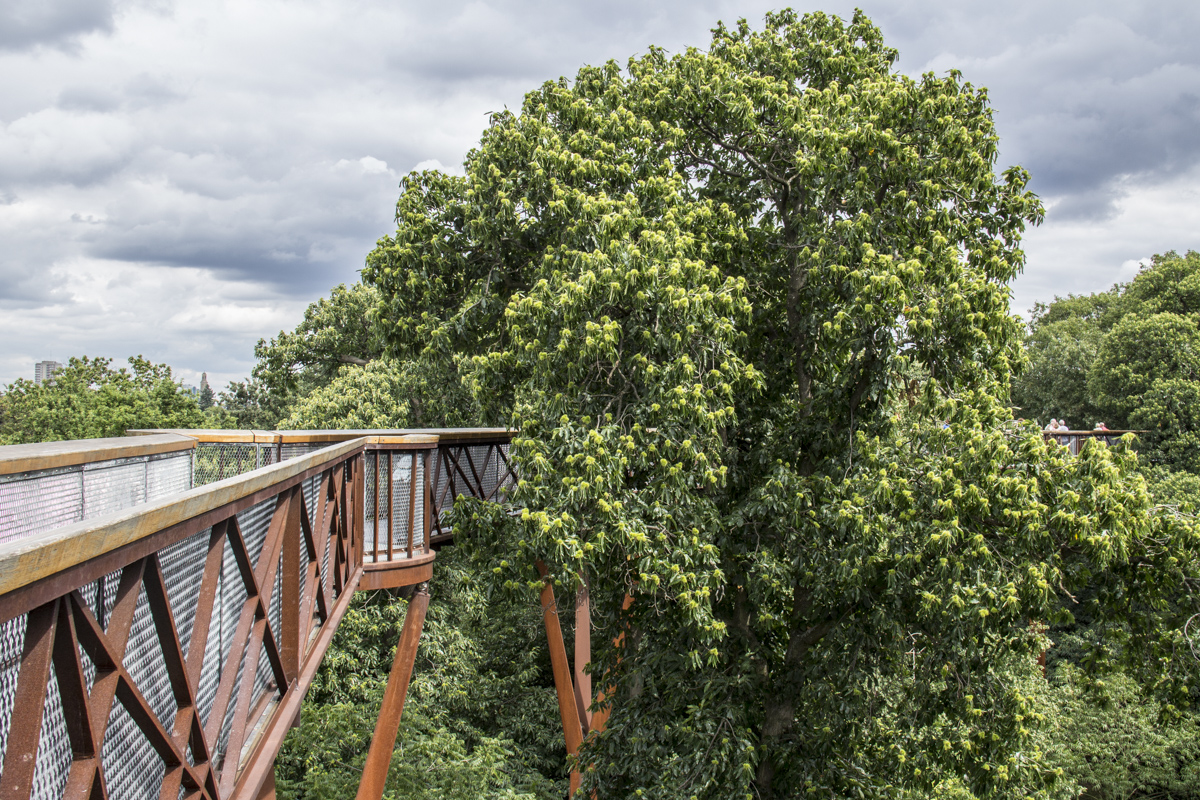
The Tree Walkway at Kew Gardens
Valery Collins is the Experienced Traveller
 An excellent raconteur, Valery has been writing about her experiences on the road since she started travelling 25 years ago. After publishing 4 books she turned to online travel writing and photography. Today she is editor, features’ writer and reviewer for ExperiencedTraveller.com and regularly contributes guided city walks to GPSmyCity.com
An excellent raconteur, Valery has been writing about her experiences on the road since she started travelling 25 years ago. After publishing 4 books she turned to online travel writing and photography. Today she is editor, features’ writer and reviewer for ExperiencedTraveller.com and regularly contributes guided city walks to GPSmyCity.com